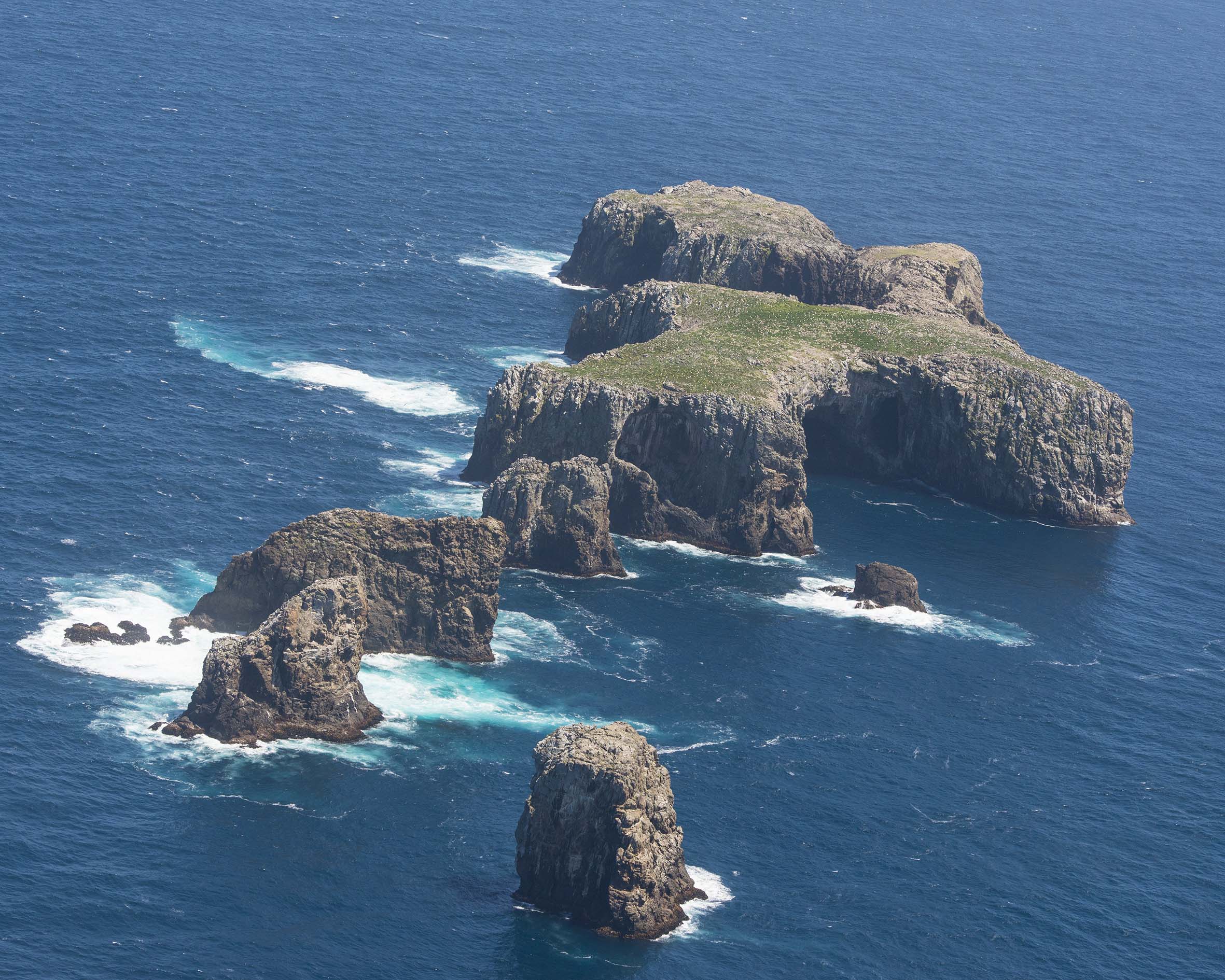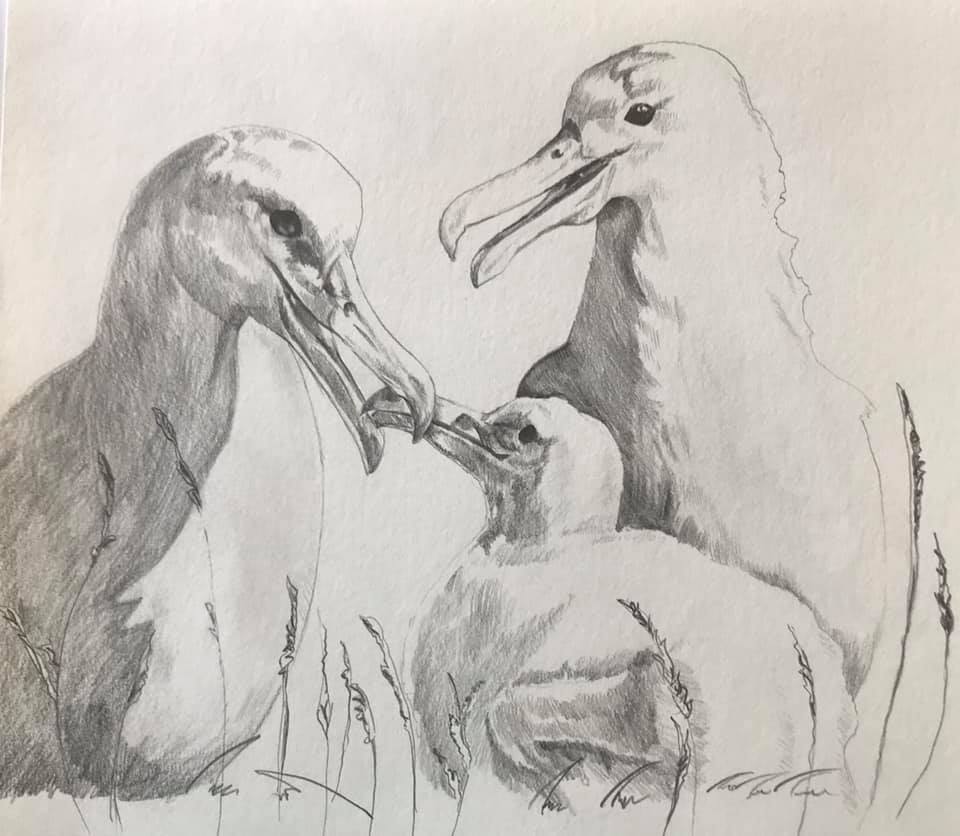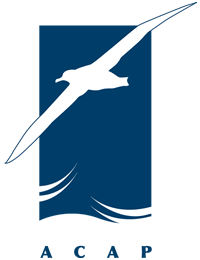 Motuhara/Forty-Fours from the air, photograph by Barry Baker
Motuhara/Forty-Fours from the air, photograph by Barry Baker
Peter Frost (Science Support Service, Whanganui, New Zealand) has reported to the Department of Conservation’s Conservation Service Programme on the December 2023 aerial survey of Northern Royal Albatrosses Diomedea sanfordi on the Chatham Islands. The report's executive summary follows.
"A total of 4322 occupied nests of Northern Royal Albatross | Toroa, Diomedea sanfordi, was counted on aerial photographs taken on 9 December 2023 during an aerial survey of three offshore islands in the Chatham Islands group: Motuhara (1853 occupied nests); Rangitautahi (1501); and Te Awanui (968). The birds were at the early incubation stage of their breeding cycle. These islands support almost the entire global breeding population of the species.
The number of birds assumed to be occupying nests on Motuhara (1853), derived from the analysis of the aerial photographs, was 300 more than those counted on the ground 6 weeks later on 20 January 2024 (a total of 1472 active or recently failed nests). Some birds could have been sitting on eggs at the time of the aerial survey but failed before the ground count was made 6 weeks later and were not identified then as such. The possibility of a small, systematic, positive bias in counting birds as occupying a nest when they were not, must also be considered.
The estimate of 4322 occupied toroa nests overall is slightly above the average reported for the corresponding stage during the 2017–2023 breeding seasons (4021 ± 117 nests), but still around 1224 fewer than that reported for 2007– 2010 (5546 ± 159 nests). The slight apparent increase may be due to the higher breeding success reported in recent years (53.7 ± 8.9%) relative to that recorded in 2007–2010 (39.3 ± 6.3%). This may be associated with increases in vegetation cover, at least on Motuhara and Te Awanui.
Recommendations include:
- Regular monitoring of the Northern Royal Albatross population breeding on the Chatham Islands should continue, ideally involving twice yearly aerial surveys, once during the early incubation period, then again immediately prior to the chicks fledging, to enable calculation of breeding success.
- Close liaison between those conducting periodic ground-based studies on Motuhara and those planning the aerial surveys is needed to ensure, as close as possible, synchrony between the two, so that the population assessments are comparable, and any sources of potential bias identified.
- Under present circumstances, where it is nearly impossible for the aerial survey data alone to produce absolutely accurate counts of the number of breeding pairs of Northern Royal Albatrosses (i.e., excluding birds sitting on empty nests), it may be more practical to continue reporting the number of occupied nests (which may include a proportion of birds sitting on empty nests) to maintain comparability with earlier aerial surveys, also essentially just of birds occupying nests. Nevertheless, work on trying to identify and reduce sources of bias, inherent in assessing aerial photographs, should continue.
- The permanent sample plots set up on Motuhara to monitor population trends of both Northern Royal Albatross and Northern Buller’s Mollymawk populations on Motuhara should continue to be maintained and surveyed, along with finding ways to reduce errors in interpretation."

A Northern Royal Albatross family by Virginia Nicol of, Artists & Biologists Unite for Nature (ABUN), after a photograph by Junichi Sugishita
Reference:
Frost, P.G.H. 2024. Aerial Survey of Northern Royal Albatross |Toroa (Diomedea sanfordi) Populations on the Chatham Islands, December 2023. Whanganui: Science Support Service. 32 pp.
John Cooper, Emeritus Information Officer, Agreement on the Conservation of Albatrosses and Petrels, 17 February 2025

 English
English  Français
Français  Español
Español